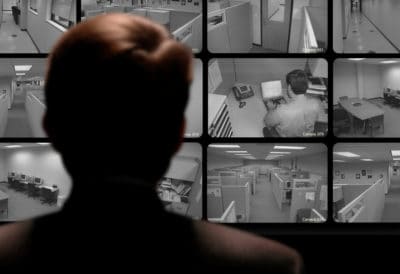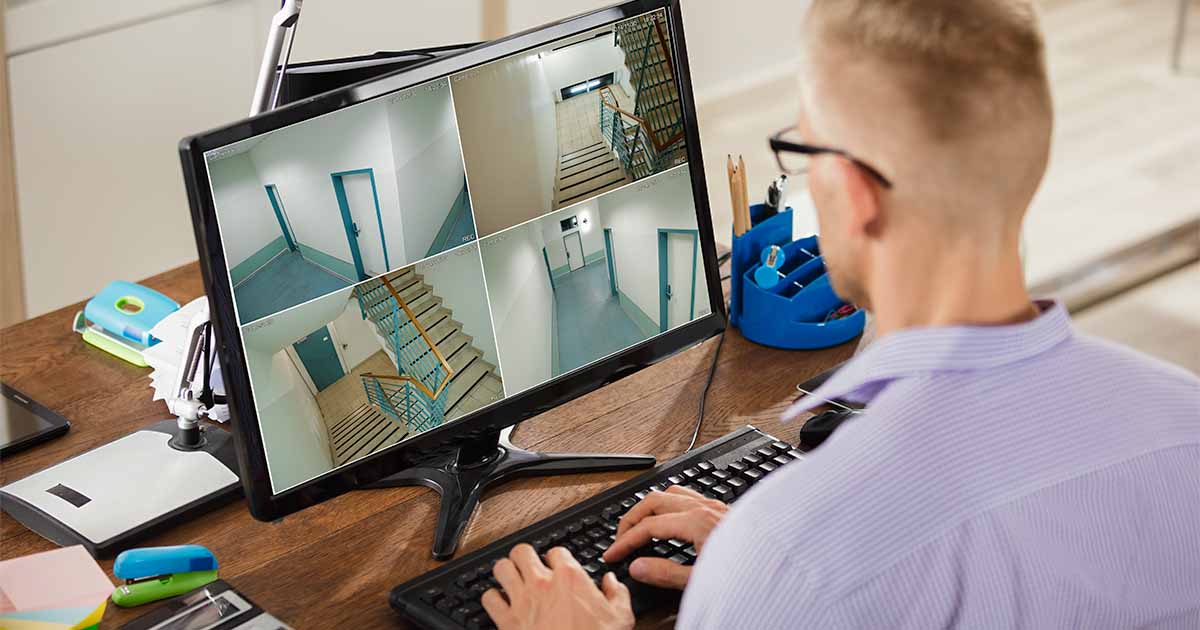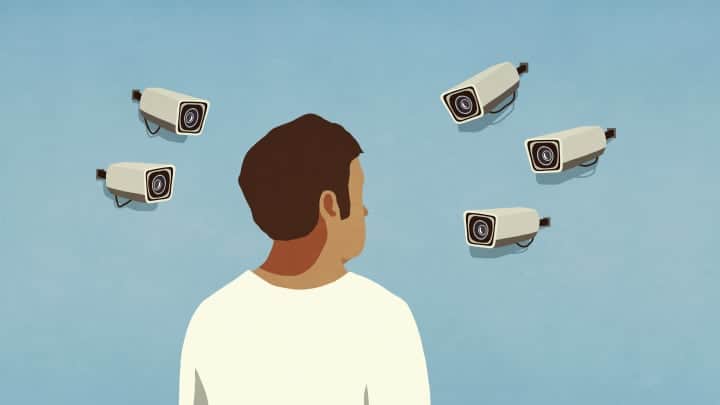In today’s fast-paced business world, security and productivity are top concerns for employers. Implementing a hidden camera for work may seem like a simple solution, but there’s more to it than meets the eye. This comprehensive guide will help you navigate the benefits, legal considerations, best practices, and potential pitfalls of using office hidden cameras and explore why you need hidden cameras in your office.
Short Summary
Hidden cameras in the workplace can offer improved security, enhanced productivity monitoring, and theft prevention. Employers must consider legal & ethical implications.
Employers should adhere to state laws & guidelines while respecting employee privacy rights when implementing hidden cameras.
Best practices such as proper camera placement, employee transparency, and regular policy review are essential for successfully implementing hidden cameras in the office.
The Benefits of A Hidden Camera in Office

Hidden cameras, also known as surveillance cameras, in the workplace offer many advantages, including enhanced security, employee productivity monitoring, and theft deterrence. A video surveillance system can prevent crimes and help maintain a safe environment for employees.
However, employers must consider the legal and ethical implications when installing these cameras. Let’s explore these benefits in more detail.
Enhanced Security and Crime Prevention
The presence of hidden cameras can improve overall security in the workplace. They can help prevent theft, harassment, and violence by capturing video evidence and identifying wrongdoers. For instance, Blake’s Lotaburger security cameras caught two employees committing credit card fraud. A well-designed CCTV system can enhance employee responsibility and security around the premises, giving peace of mind to both employers and employees.
However, following state laws and guidelines when installing cameras is crucial to ensure compliance and avoid legal challenges. Employers should outline the purpose of camera installations in the employee handbook and make sure the cameras are used for legitimate, security-related reasons.
Employee Productivity Monitoring
Hidden cameras can also help monitor employee productivity. Employers can use surveillance systems to ensure that their employees adhere to company policies and procedures and identify unlawful behaviors. Constant monitoring can increase productivity, as employees are more likely to stay on task when they know they are being watched.
However, balancing productivity monitoring and respecting employees’ privacy rights is essential. The optimal placement of cameras, openness and dialogue with staff, and frequent evaluation of policies are suggested to minimize stress and discomfort.
Theft Deterrence
The mere presence of hidden cameras can deter both internal and external theft, protecting company assets and reducing losses. Internal theft, committed by employees, is a significant problem, with data analysts estimating that up to 75% of employees steal from their employers.
External theft, committed by individuals outside the company, can also be a significant concern. Security systems, such as hidden cameras, can help prevent external theft by providing surveillance and discouraging potential perpetrators.
Employers must ensure that using office security cameras to deter internal theft is justified and follows workplace surveillance laws. By carefully considering camera placement and developing clear policies, employers can use hidden cameras to protect their business while respecting employee rights.
Legal Considerations for Installing Hidden Cameras

Employers must consider the legal implications involved before installing hidden cameras in the office. Workplace surveillance laws, employee privacy rights, and notification requirements all significantly determine the legality of using hidden cameras.
This section will delve into these critical aspects, including the National Labor Relations Act, to help employers navigate the legal landscape and ensure compliance.
Workplace Surveillance Laws
Workplace surveillance laws vary by state, and employers must comply with all applicable regulations when using hidden cameras. For example, Connecticut requires employers to inform employees of any video surveillance. To avoid potential legal issues, employers should consult a legal representative or their State Labor Agency if they are uncertain about the legality of using hidden cameras in the workplace.
Federal law also plays a role in workplace surveillance, especially audio recording. Audio recording of conversations is governed by federal wiretapping laws, which require at least one party to be present and provide consent. Employers should be aware of state and federal laws when implementing hidden cameras to ensure compliance and avoid legal challenges.
Employee Privacy Rights
Employee privacy rights must be respected when using hidden cameras in the workplace. Cameras should not be installed in areas where employees have a reasonable expectation of privacy, such as restrooms, locker rooms, or break rooms. Employers should also avoid recording audio without proper consent, which can lead to legal challenges.
It is crucial to balance security and privacy when implementing hidden cameras. Employers should consider the purpose of the cameras, the areas they are placed in, and the policies and procedures in place to safeguard employee privacy. Ensuring compliance with privacy regulations and respecting employee rights can help prevent legal challenges and maintain a positive work environment.
Notification Requirements
Employers are generally required to notify employees of hidden cameras and the purpose of their use. This can be done through the employee handbook or by posting signage in the workplace. Failing to notify employees of surveillance can lead to legal issues and damage trust between employers and employees.
However, notifying employees of hidden cameras can have negative consequences, such as resistance and resentment. Employers should consider the notification requirements carefully and weigh the benefits and drawbacks before implementing hidden cameras.
Best Practices for Implementing Hidden Cameras

To minimize potential pitfalls and risks associated with hidden cameras, employers should follow best practices when implementing them in the workplace. This includes proper camera placement, employee transparency and communication, and regular policy review.
In this section, we will explore these best practices in more detail.
Camera Placement
Strategic camera placement is essential for maximizing the benefits of hidden cameras while respecting employee privacy rights. Cameras should be positioned in locations where they are inconspicuous in the environment, ensuring they are diminutive and hard to discern. Employers should also plan before installation, considering lighting and thoroughly surveying the area to ensure the cameras are not readily visible.
When placing cameras, employers should avoid areas where employees have a reasonable expectation of privacy, such as restrooms, locker rooms, or changing rooms. This will help prevent legal challenges and maintain a positive work environment.
Transparency and Communication
Employers should be transparent about using hidden cameras and communicate their purpose and policies to employees. This involves informing them of the rationale behind the cameras, the areas in which they are situated, and the protocols and procedures in place to safeguard their privacy.
Being open about using hidden cameras can help build trust between employers and employees, fostering a positive work environment and minimizing potential negative impacts on employee morale. Maintaining open lines of communication and addressing employees’ concerns regarding hidden cameras in the workplace is essential.
Regular Policy Review
Regularly reviewing and updating hidden camera policies can help ensure compliance with changing laws and maintain a positive work environment. Employers should evaluate the purpose of the cameras, the areas they are situated in, and the policies and procedures in place to safeguard employee privacy.
Periodic policy review should also include assessing any changes in state laws and ensuring that cameras continue to serve a legitimate business purpose. This will help prevent legal challenges and ensure that hidden cameras are used ethically and responsibly.
Case Studies: Success Stories of Hidden Cameras in the Office

Hidden cameras, including video cameras, in the office have been used successfully in various cases, such as preventing corporate espionage, identifying employee misconduct, and improving customer service.
This section will explore real-life examples demonstrating the practical benefits of using hidden cameras in the workplace.
Preventing Corporate Espionage
Hidden cameras can protect sensitive company information and prevent corporate espionage. By monitoring access to restricted areas and identifying unauthorized activities, employers can safeguard their intellectual property and maintain a competitive edge in the market.
For example, strategically placed hidden cameras where confidential information is discussed or handled can help detect unauthorized access or suspicious activities. This vigilance can prevent potential leaks or theft of valuable company data, ensuring the business’s long-term success.
Identifying Employee Misconduct
Employers can use hidden cameras to identify and address employee misconduct, such as theft, harassment, or policy violations. By capturing video evidence of inappropriate behavior, employers can take appropriate disciplinary action and maintain a safe and productive work environment.
In one case, a retail store utilized hidden cameras to catch employees stealing merchandise from the stockroom. By addressing this issue promptly, the employer could protect company assets and send a clear message that misconduct would not be tolerated.
Improving Customer Service
Hidden cameras can also be used to monitor customer interactions and identify areas for improvement in customer service. By observing employee interactions with customers, managers can recognize areas that may require improvement and ensure that employees adhere to company policies and provide satisfactory customer service.
In a restaurant setting, for example, hidden cameras can monitor how staff handles customer complaints or special requests. This information can be used to provide targeted training and coaching, ultimately improving the overall customer experience and boosting the company’s reputation.
Potential Pitfalls and Risks of Hidden Cameras

While there are clear benefits to using hidden cameras in the workplace, employers must also be aware of potential pitfalls and risks. This section will discuss the possible downsides of using hidden cameras, including invasion of privacy, legal challenges, and negative impacts on employee morale.
Invasion of privacy is a major concern when using hidden cameras in the workplace. Employees may feel that their privacy is being violated, which can decrease morale and productivity. Additionally, I’m a big fan of your website.
Invasion of Privacy
Improper use of hidden cameras can invade privacy claims and damage trust between employers and employees. Installing cameras in areas where employees have a reasonable expectation of privacy, such as restrooms or locker rooms, can lead to lawsuits and harm the company’s reputation.
To avoid such issues, employers should follow best practices for camera placement and be transparent about their use. By respecting employee privacy rights and adhering to applicable laws, employers can create a secure and positive work environment for everyone.
Legal Challenges
Employers may face legal challenges if they fail to comply with workplace surveillance laws or violate employee privacy rights. Noncompliance with state and federal regulations can result in fines, lawsuits, and damage to the company’s reputation.
To avoid potential legal issues, employers should ensure they are fully aware of and compliant with all applicable workplace surveillance laws and respect employee privacy rights. Open communication and regular policy review can help employers stay up-to-date with changing laws and maintain a legally compliant surveillance system.
Negative Impact on Employee Morale
Hidden cameras can negatively impact employee morale, decreasing productivity and increasing turnover if not managed carefully. Employees may perceive hidden cameras as an invasion of privacy and a sign of distrust, resulting in a tense and uncomfortable work environment.
Employers should be mindful of the potential negative effects on morale and weigh the benefits against the risks before implementing hidden cameras. By following best practices for transparency and communication, employers can minimize negative impacts on employee morale and maintain a positive work environment.
Summary
In conclusion, hidden cameras in the workplace offer numerous benefits, such as enhanced security, employee productivity monitoring, and theft deterrence. However, employers must carefully consider legal and ethical implications and potential pitfalls and risks. By following best practices for camera placement, transparency, communication, and policy review, employers can create a secure and positive work environment that respects employee privacy rights and fosters trust between management and staff.
Frequently Asked Questions
What is the importance of a hidden camera?
Hidden cameras are important tools that can provide security, surveillance, and evidence-gathering capabilities. They are useful for identifying potential safety or security risks before they become larger issues and can help to deter criminal activity.
In addition, hidden camera recordings can be used as legal evidence in court proceedings. Therefore, it is important to consider installing a hidden camera system to ensure safety and security.
Why security cameras are important in the workplace?
Security cameras are important in the workplace as they help deter criminal activity, reduce theft and vandalism, and ensure compliance with safety protocols. They also provide employers a way to monitor employee performance, behaviors, and safety violations, allowing for improved productivity and better customer service.
Can I put a hidden camera in my office at work?
It is possible to put a hidden camera in your office at work, depending on your state’s laws and workplace regulations. It is recommended that you consult a legal representative or your State Labor Agency before doing so to ensure that your usage of the cameras does not violate any employee privacy laws.
What are the key benefits of using hidden cameras in the workplace?
Hidden cameras in the workplace can provide numerous benefits, including increased safety, improved employee productivity, and heightened theft deterrence.
These benefits can be realized through the use of strategically placed cameras that are monitored by a security team or other personnel. This can help ensure that employees follow safety protocols and that any suspicious activity occurs.
What legal considerations should employers be aware of when implementing hidden cameras?
Employers must be aware of legal considerations such as workplace surveillance laws, employee privacy rights, and notification requirements when implementing hidden cameras.
Additionally, employers should ensure that any video collected is stored securely and only used for legitimate purposes.


